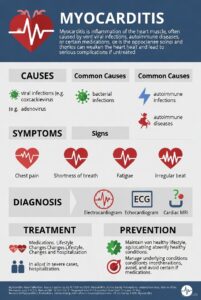Nursing Management: Acute Pancreatitis
- Nursing Assessment
- Subjective Data
- Important Health Information
- Past health history:
- Biliary tract disease, alcohol use, abdominal trauma, duodenal ulcers, infection, metabolic disorders
- Medications:
- Thiazides
- Nonsteroidal anti-inflammatory drugs
- Surgery or other treatments:
- Surgical procedures on the pancreas, stomach, duodenum, or biliary tract.
- Endoscopic retrograde cholangiopancreatography (ERCP)
- Past health history:
- Functional Health Patterns
- Health perception–health management:
- Chronic alcohol use, fatigue
- Nutritional-metabolic:
- Nausea and vomiting, anorexia
- Activity-exercise:
- Dyspnea
- Cognitive-perceptual:
- Severe midepigastric or left upper quadrant pain that may radiate to the back, aggravated by food and alcohol intake and unrelieved by vomiting
- Health perception–health management:
- Important Health Information
- Objective Data
- General
- Restlessness, anxiety, low-grade fever
- Integumentary
- Flushing, diaphoresis, discoloration of abdomen and flanks, cyanosis, jaundice. Decreased skin turgor, dry mucous membranes
- Respiratory
- Tachypnea, basilar crackles
- Cardiovascular
- Tachycardia, hypotension
- Gastrointestinal
- Abdominal distention, tenderness, and muscle guarding. Diminished bowel sounds
- Possible Diagnostic Findings
- Increased serum amylase and lipase
- Leukocytosis
- Hyperglycemia
- Hypocalcemia
- Abnormal ultrasound and CT scans of pancreas
- Abnormal ERCP or MRCP
- General
- Subjective Data
- Nursing Diagnoses
- Acute pain related to distention of pancreas, peritoneal irritation, obstruction of biliary tract, and ineffective pain and comfort measures
- Deficient fluid volume related to nausea, vomiting, restricted oral intake, and fluid shift into the retroperitoneal space
- Imbalanced nutrition: less than body requirements related to anorexia, dietary restrictions, nausea, loss of nutrients from vomiting, and impaired digestion
- Ineffective health management related to lack of knowledge of preventive measures, diet restrictions, alcohol intake restriction, and follow-up care
- Nursing Planning
- The overall goals are that the patient with acute pancreatitis will have
- Relief of pain
- Normal fluid and electrolyte balance
- Minimal to no complications
- No recurrent attacks
- The overall goals are that the patient with acute pancreatitis will have




